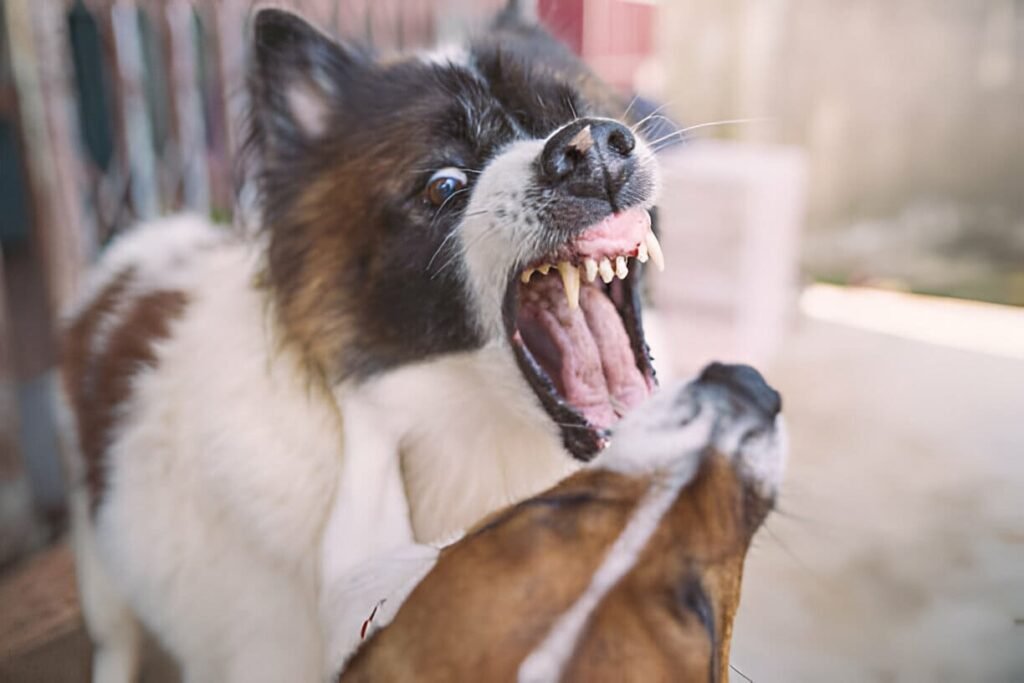Table of Contents
ToggleUnderstanding Rabies in Dogs: 6 Warning Signs and How to Protect Your Furry Friend:
Rabies is a terrifying and fatal viral disease that attacks the nervous systems of mammals, including our beloved canine companions. Caused by the rabies virus, it’s a public health concern as well, as infected animals can transmit the virus to humans through bites or contact with saliva. While uncommon in developed countries with widespread vaccination programmes, rabies remains a threat in many parts of the world.
Knowing the signs of rabies in your dog is crucial. Early detection and intervention can not only save your pet’s life but also prevent the spread of the virus to humans. Here, we’ll delve into the six key symptoms to watch out for and explore steps to protect your furry friend from this deadly disease.
1. Behavioural Metamorphosis: A Shift in Your Dog's Personality
Rabies wreaks havoc on the intricate network of the nervous system, frequently causing dramatic alterations in a dog’s behavior. These changes can be quite perplexing, as a normally playful and affectionate dog might become withdrawn, reclusive, and even fearful. Conversely, a typically docile dog may exhibit unexpected aggression, snapping or growling at seemingly harmless stimuli.
The key here is to be aware of your dog’s baseline temperament. Any significant and unexplained deviation from their usual behaviour warrants a visit to the veterinarian, especially if accompanied by other rabies symptoms.
2. Excessive Drooling: A Sign of Difficulty Swallowing
One of the more recognisable signs of rabies in dogs is excessive drooling. This drool may appear thick and foamy, but it can also be watery and clear. The reason behind this symptom lies in the virus’s impact on the nervous system. Rabies can interfere with your dog’s ability to swallow, causing a buildup of saliva in the mouth that they are unable to control.
However, it’s important to note that excessive drooling can also be caused by other factors like nausea, dental problems, or even heatstroke. If drooling is accompanied by other rabies symptoms, especially behavioural changes or difficulty swallowing, seek veterinary attention immediately.
3. Hydrophobia: The Fear of Water, a Telltale Sign
Hydrophobia, literally meaning “fear of water,” is a hallmark symptom of rabies in both dogs and humans. It arises due to the difficulty swallowing caused by the rabies virus. When a dog attempts to drink water, the act triggers painful muscle spasms in the throat and neck, making them associate water with discomfort. This can manifest as a reluctance to drink or even an aversion to approaching water altogether.
If your dog normally enjoys playing in water or readily laps up their water bowl but suddenly displays a strong aversion, it’s a cause for concern, especially if coupled with other rabies signs.
4. Seizures and Paralysis: A Grim Progression of the Disease
As rabies progresses, it can wreak havoc on the nervous system, leading to neurological complications like seizures and paralysis. Seizures can manifest as violent shaking, muscle stiffening, and loss of consciousness. Paralysis can start in the hind legs and gradually spread to other parts of the body.
The presence of seizures or paralysis is a medical emergency, and you should immediately seek veterinary attention. By this stage, the rabies infection is likely advanced, highlighting the importance of early detection based on the preceding symptoms.
5. Hypersensitivity: A Heightened Response to Stimuli
Rabies can make your dog hypersensitive to their surroundings. Normally, unremarkable sights, sounds, or touches can trigger an exaggerated response. They may flinch or become startled easily, exhibiting signs of anxiety and agitation. This heightened sensitivity is a consequence of the rabies virus affecting the way the nervous system processes sensory information.
6. Vocalisation Changes: A Different Bark in the Park
The rabies virus can infiltrate the muscles responsible for vocalisation, affecting the way your dog barks or whines. Their bark may sound hoarse, muffled, or off-key compared to their usual vocalizations. While not as specific a symptom as others on this list, a change in vocalisation can be another piece of the puzzle when diagnosing rabies, especially if accompanied by other signs.
Protecting Your Dog from Rabies: Vaccination is Key
The good news is that rabies is entirely preventable through vaccination. Vaccination schedules vary depending on your location and your dog’s age. Consult your veterinarian to determine the appropriate vaccination protocol for your furry friend.
Conclusion:
In conclusion, rabies is a serious threat, but it’s also a preventable one. By understanding the signs of rabies and ensuring your dog’s vaccinations are up-to-date, you can protect your beloved companion and keep your family and community safe.
Remember:
once symptoms of rabies appear in infected animals, it is almost always fatal. Early detection is critical. If you suspect your dog has rabies, avoid contact and call your veterinarian or animal control immediately.
